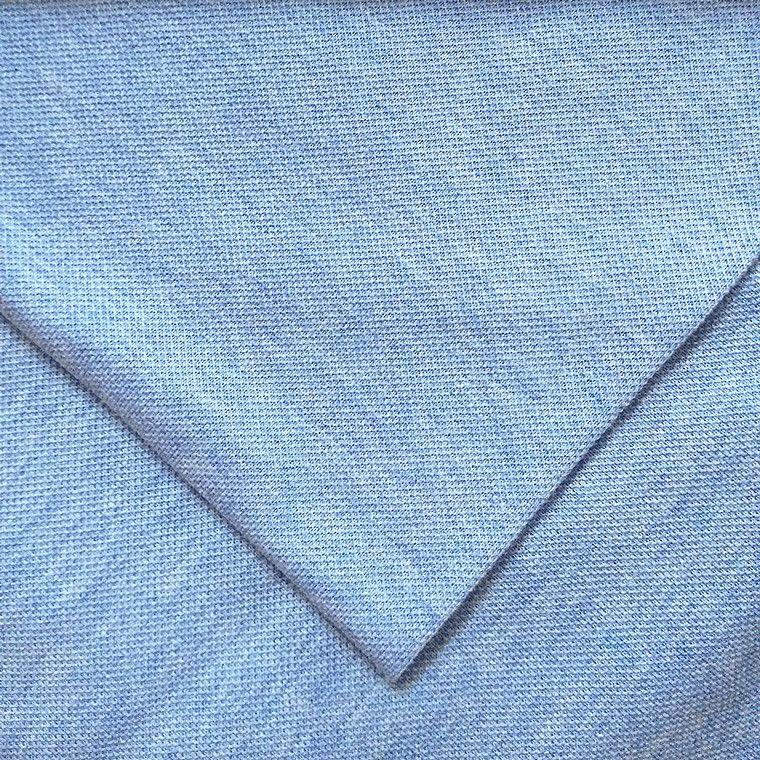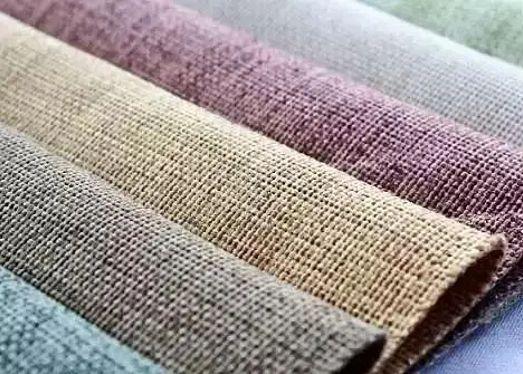The styling characteristics of the fabric:
1. Soft fabric
Soft fabrics are generally thin and light, with good drape, smooth shape lines, and naturally stretched clothing outlines. Soft fabrics mainly include knitted fabrics and silk fabrics with loose fabric structures, as well as soft and thin linen fabrics. Soft knitted fabrics often use linear and concise shapes in clothing design to reflect the graceful curves of the human body; silk, linen and other fabrics often use loose and pleated shapes to express the flow of fabric lines.
2. Crisp fabric
The crisp fabric has clear lines and a sense of volume. Can form plump clothing silhouette. Commonly used fabrics include cotton, polyester-cotton, corduroy, linen, and various medium-thick wool and chemical fiber fabrics. This type of fabric can be used in designs that highlight the accuracy of clothing shapes, such as suits and suits.
3. Glossy fabric
Glossy fabric has a smooth surface and can reflect light. There is a feeling of brilliance. Such fabrics include fabrics with a satin weave structure. It is most commonly used in evening wear or stage performance clothing, producing a gorgeous and dazzling strong visual effect. Glossy fabrics have a wide degree of freedom in styling during dress performances, and can have simple designs or more exaggerated styling methods.
4. Thick and heavy-duty fabrics
Thick and heavy-duty fabrics are thick and scratchy and can produce stable Styling effects, including all types of thick woolen and quilted fabrics. The fabric has a sense of physical expansion and should not be pleated and piled too much. A-type and H-type shapes are the most appropriate in the design.
5. Transparent fabric
Transparent fabric is light, transparent and elegant. And mysterious artistic effect. Including cotton, silk, chemical fiber fabrics, etc., such as georgette, satin silk, chemical fiber lace, etc. In order to express the transparency of the fabric, H-shaped and circular cone-shaped designs with natural and full lines are commonly used.
Commonly used fabrics for clothing:
1. Pure cotton

Natural fabric, comfortable to wear, breathable, warm, but easy to wrinkle, difficult to care for, poor durability, and easy to fade. Therefore, there are very few 100% cotton fabrics. Usually, the fabrics containing more than 95% cotton are called pure cotton.
Advantages: Strong hygroscopicity, good dyeing performance, soft feel, comfortable to wear, no static electricity, good breathability, anti- Sensitive, simple in appearance, not easy to be infested by insects, durable and easy to clean.
Disadvantages: Large shrinkage, poor elasticity, easy to wrinkle, poor shape retention, easy to mildew, slight Fading phenomenon, not acid-resistant
Notes: Clothing and cotton should be protected against moisture and mildew during storage, use and storage; they should not be used for long periods of time Time exposure, the inner layer needs to be turned out when drying, do not wring it out, prevent moisture, mildew, and dry in the shade. It can be machine washed or hand washed, but due to the poor elasticity of the fiber, it is best to wash it or not wash it by hand vigorously during washing to avoid deformation of the clothes and affecting the size. It is best to wash cotton fabrics in cold water to maintain the original color. Do not soak them for a long time. Key points for ironing: iron at low and medium temperatures; when ironing at medium temperatures, the clothes must be covered with a dry cloth to avoid aurora. Ironing should be done at low or medium temperature; when ironing at medium temperature, the clothes should be covered with a dry cloth to avoid aurora.
2. Cotton mercerization

Advantages:Cotton fabrics treated with high concentration caustic soda (hair) , smooth to the touch, bright in color, silky luster, and comfortable to wear.
Disadvantages: Slight fading.
Note: (Basically the same as cotton fabric).
3. T/C fabric (polyester/cotton)
Fabric technology: Made of fine or ultra-fine denier polyester fiber interwoven with high-count combed cotton (40-count, 60-count, 80-count, etc.),
Advantages: The fabric feels crisp, smooth and brightly colored. The body is elastic, has good moisture absorption and breathability, has a smooth surface, and has a certain rainproof function.
Washing and maintenance: Washing temperature should be below 30℃, washing and soaking time should not exceed 30 minutes, do not bleach with chlorine, do not expose to the sun, do not wring out, do not tumble dry Dry, suitable for drying in the shade, and be careful to prevent moisture. Ironing. Do not dry clean. Iron at 110℃ low temperature steam.
4. Hemp:
It is a kind of plant fiber, known as a cool and noble fiber, and it has good hygroscopicity , it also releases moisture quickly, is not easy to produce static electricity, has large heat conduction, quickly dissipates heat, is cool to wear, does not stick to the body after sweating, is more resistant to washing, and has good heat resistance.







